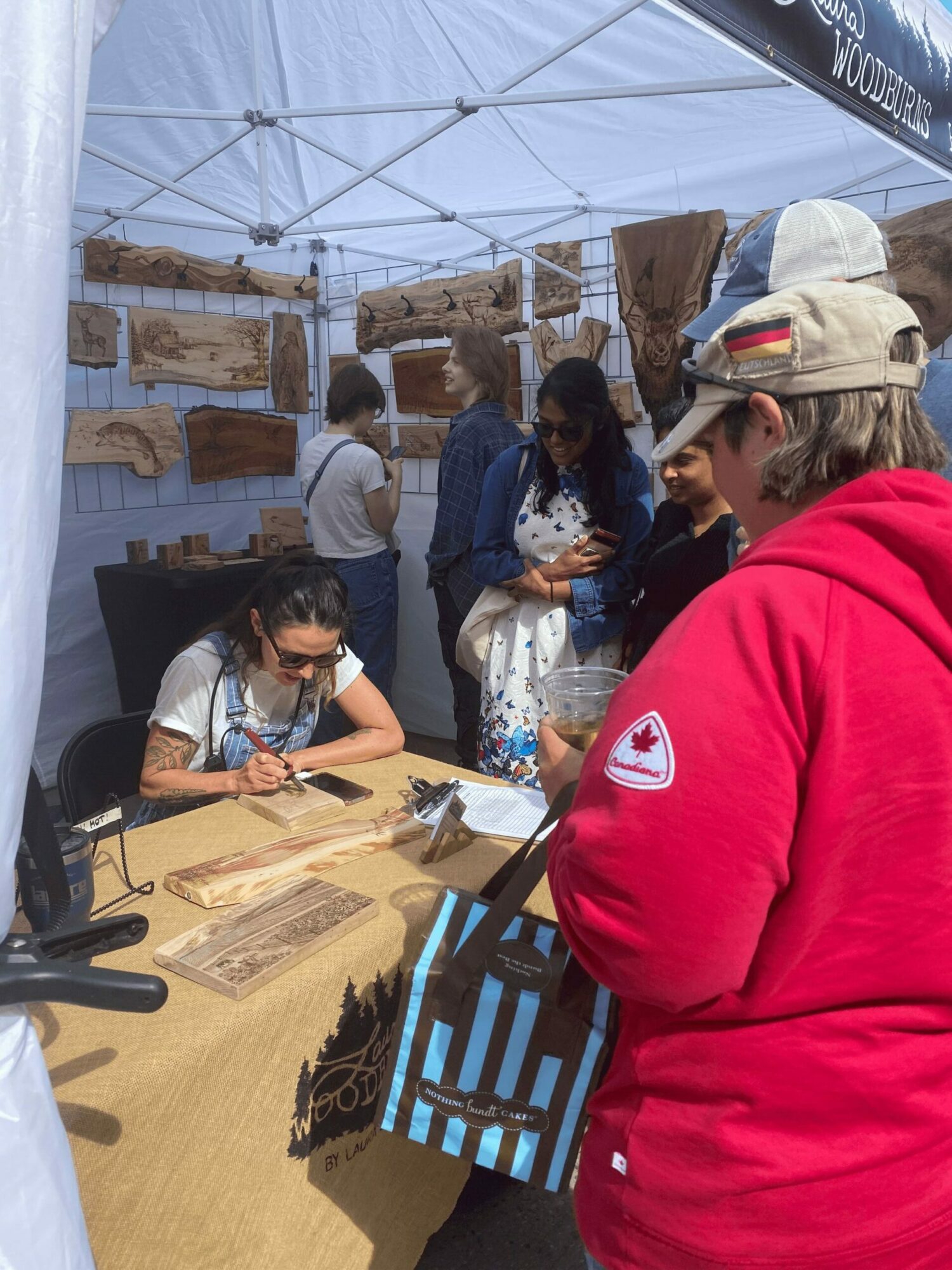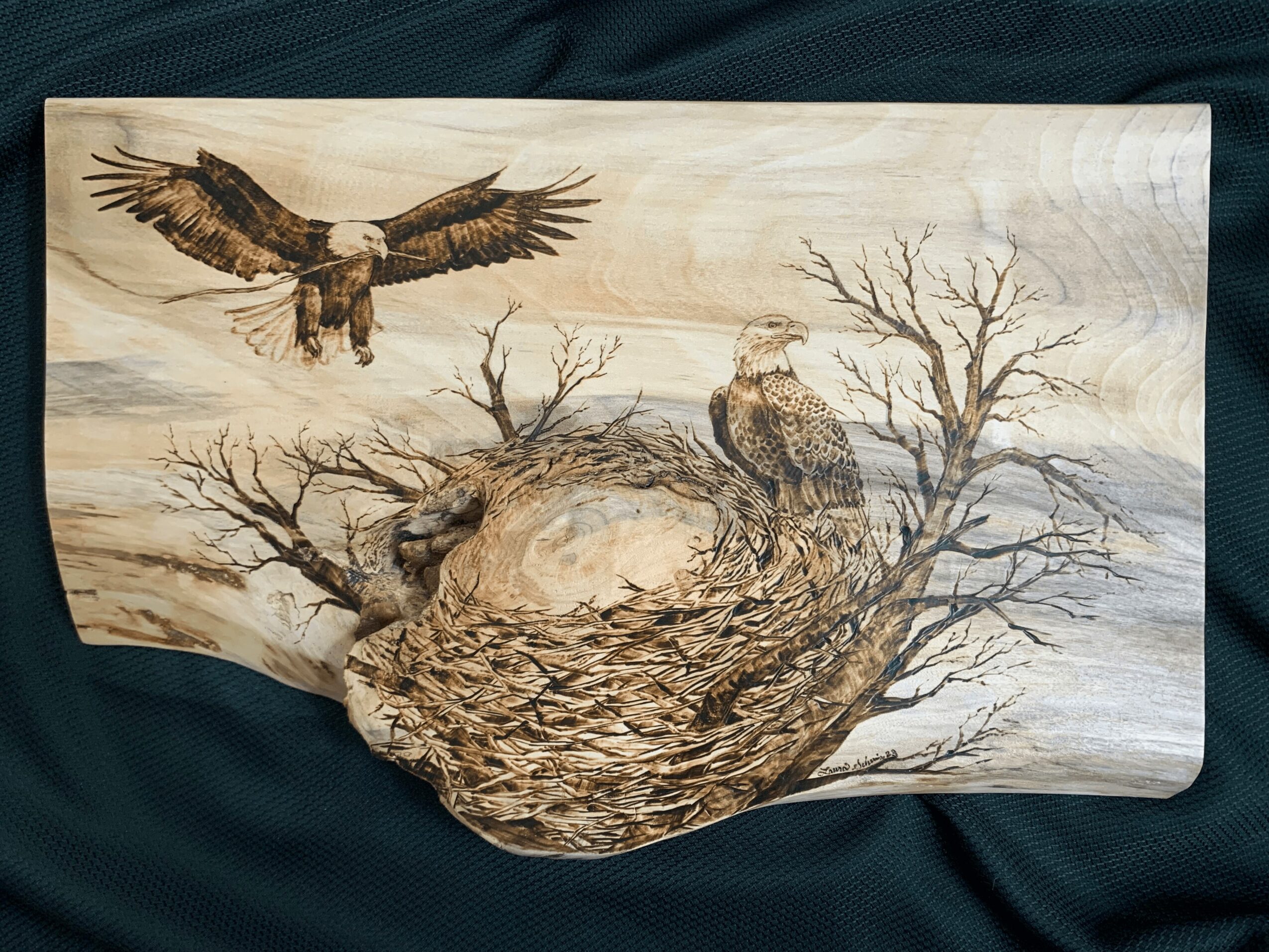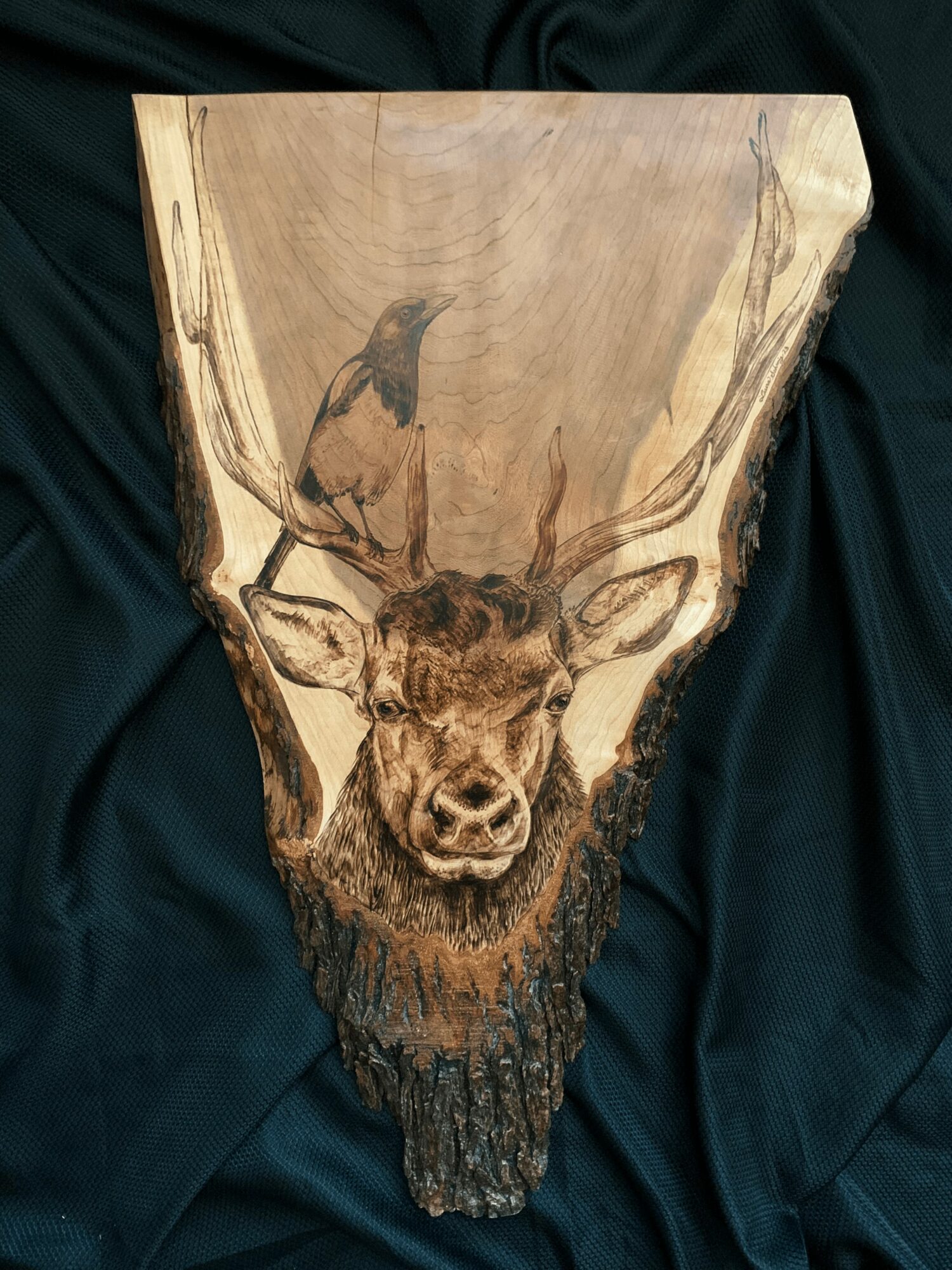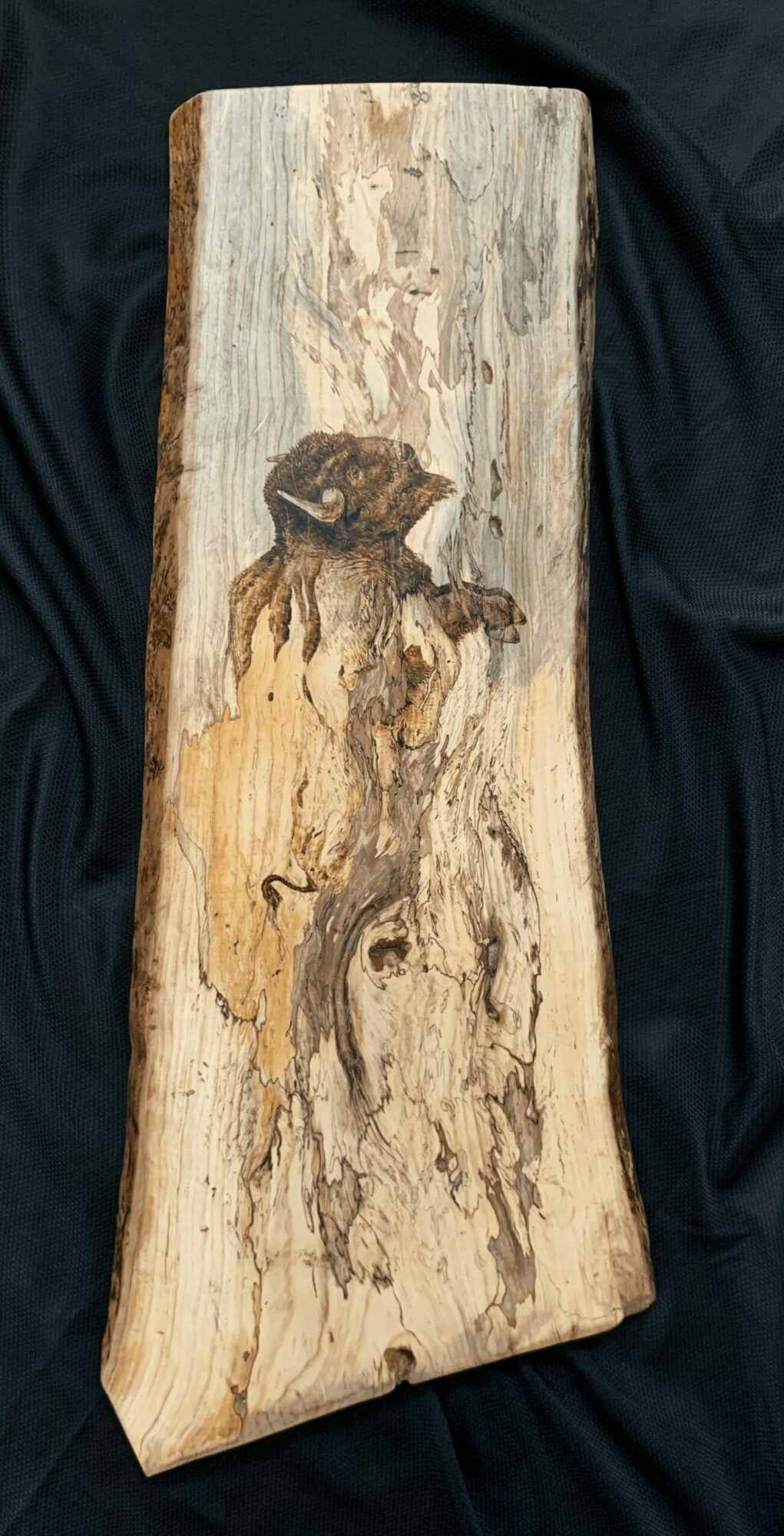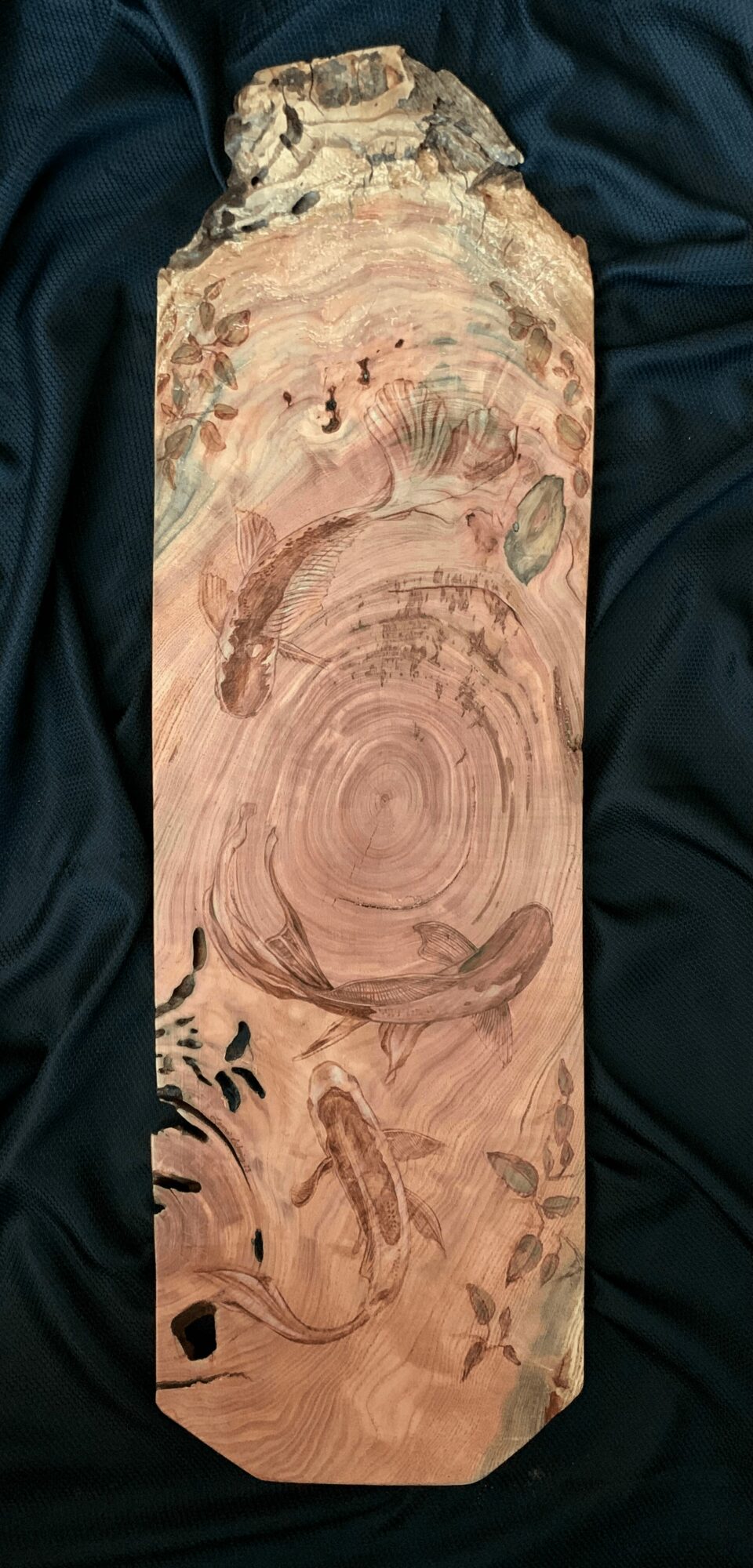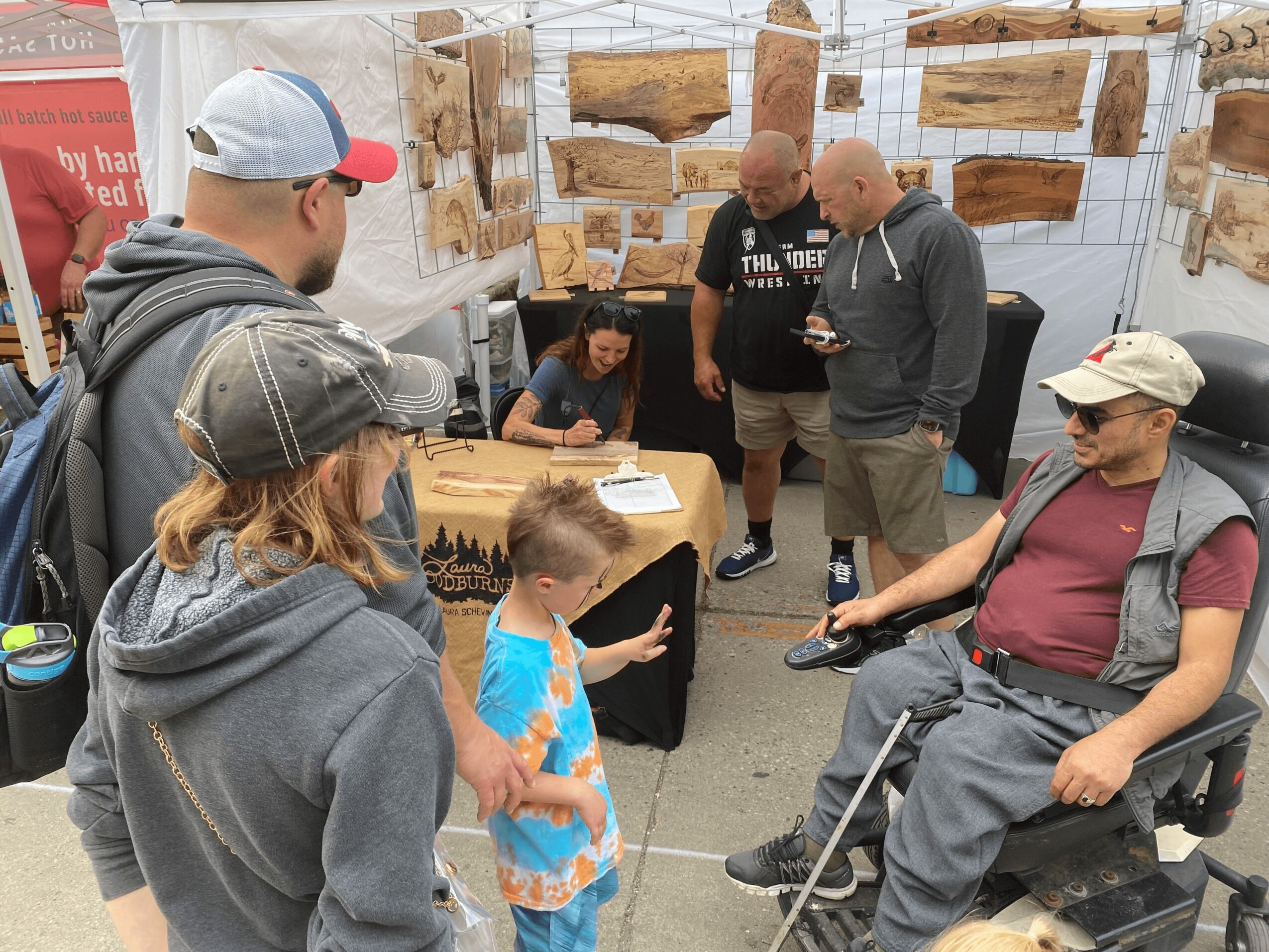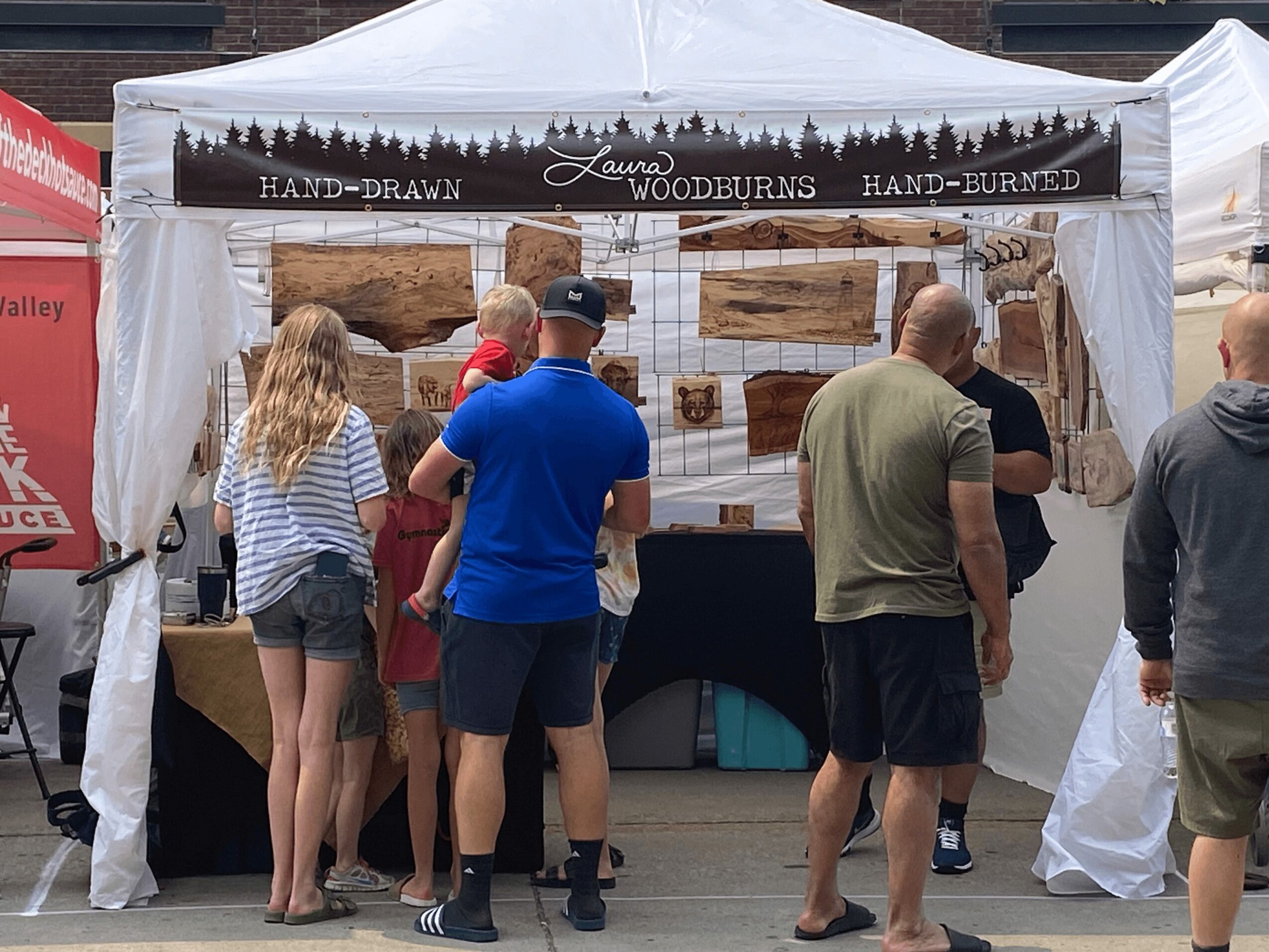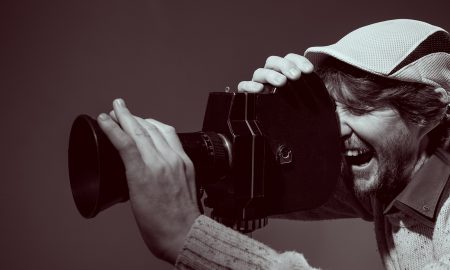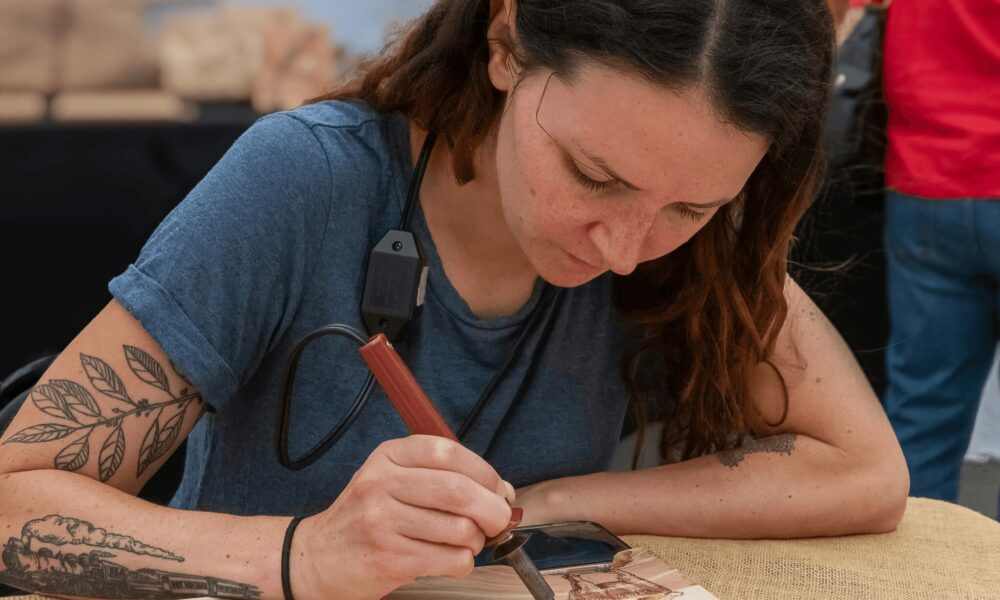

Today, we’d like to introduce you to Laura Spencer.
Hi Laura, I’m so excited to have you on the platform. So, before we get into questions about your work life, maybe you can bring our readers up to speed with your story and how you got to where you are today.
I’m a 30-year-old woodburning artist and illustrator.
I create landscapes, wildlife, and scenes on slabs of unique wood–not one piece is the same and literally can’t be, as the wood is the canvas. I don’t use any computers, lasers, or projectors; I hand-draw and hand-burn each piece, which is something I’m most proud of as I study each piece’s attributes and character and try to enhance the story the wood has already started telling.
I gained my undergraduate degree from the University of North Carolina School of the Arts in scene painting at the Design and Production School in 2018, and from there, I jumped across the pond to Bournemouth, England, to receive my Masters in 3D Animation at Bournemouth University. I returned to America in the fall of 2019 with barely a dime in my pocket and the expectation to move to California to work at an animation studio.
The culture shock of returning, the financial woes, and the degrading application process where non-paying internships were the only jobs hiring with my experience led me to get a housekeeping job at the Biltmore in Asheville, NC. Then, 6 months later, the world shut down from Covid-19. At the time, I was completely defeated and had no plans as I did odd and end jobs–I painted houses, installed flooring, did some sheetrock work… then picked up my wood burner.
I did it as a hobby while I was an undergrad, but I thought nothing of it. I hadn’t touched the tool for over a year, but slowly and steadily, it began to consume me. I began to illustrate for two companies as well, moved to a smaller town in North Carolina with cheaper rent, sold small woodburning at a local gift shop, and got a part-time job to meet people and have a safety net financially, but it wasn’t until art fairs came into the picture that my woodburning world blew up.
Through the shows, I met other woodworkers, sawmill owners, mentors, and a target audience, as mountain shows are ideal for wood art. Right when I thought I had found my niche, I decided to move to Kansas to date and recently marry an amazing man. This made the dating life much easier, however the work life became trickier as mountain shows were no longer at my fingertips.
The first year I traveled a lot to live the double life of Kansas City shows, such as Topeka and Lawrence, and the North Carolina shows. I bought an older family van that already had the seats taken out of it and renovated it to allow me to store all my show stuff in it–tent, walls, bins, wood; and included a pull-out bed so I wouldn’t have to constantly book Airbnb or hotel rooms when traveling. This way of life worked financially and allowed me to not have to ‘lose’ opportunities, but it took a toll on my mental and emotional life as I needed more stability after making the big move.
It felt like I had one foot in NC and the other in KS, and that wasn’t fair to my boyfriend and the friends I was trying to make in Kansas as I kept missing life events and ‘markers.’ Therefore, last year I decided to only travel to NC for one show, then did a show in Fargo, ND in order to see all my relatives who live up there, and then the rest were local, and I felt way more balanced and stable.
Now, the tricky part is making sure this more stable way of life stays financially stable, as Kansas and wood burnings aren’t as obvious as NC cabins and wood burnings.
We all face challenges, but would you describe it as a relatively smooth road?
Moving from North Carolina to Kansas has been the biggest obstacle. There are no regrets, and I love Kansas; however, wood art is meant for the cabins of North Carolina. Wood sources, wood species, wood mentors… they are on every corner and are thriving, while I have to search around here in Kansas, where the prairies are abundant.
The art show culture is also different–in North Carolina, wood turners, carvers, butcher boards, wood furniture, bird houses… so many wood vendors, while here, there are painters, weavers, quilters, epoxy pours… therefore I feel like I don’t fit in as well with the local style. This is good and bad; people marvel as it’s something new they’ve never seen before or seen little of, which makes me feel unique and special, but a lot of the time, marveling doesn’t turn into buying as the wood art doesn’t work with the design aesthetic they have going on in their house.
Hobby Lobby art is everywhere in my friends’ homes, and there is nothing wrong with that; they have beautiful homes. I just simply can’t compete with it price-wise or even stock-wise. Another big difference is how the shows are run. Mountain shows pop up here and there with very little effort. There are no food trucks and no road closures; just a grass field they let you park on, and the unloading begins.
This allows a very small booth fee, and if you do it one year, you’re automatically invited to the next, so no more application fee. City shows are harder and take way more organizing and their jury process is more tedious as you apply every year even if you’ve been doing it for 5 years, thus you not only pay a large booth fee, but also a yearly application jury fee. It’s all a different game that I didn’t see coming, so I’ve had to adjust and plan better, both stock-wise and financially.
Thanks – so, what else should our readers know about your work and what you’re currently focused on?
During the month or two before art show season, normally June-Oct, I am focused on burning wood and building stock for my website and future shows. I try to have an array of landscapes, wildlife, animals, and birds so I can attract more people, but I also need to think of different sizes as well to create a good spectrum of prices.
I may have an amazing bison head that attracts multiple people, but the high price due to the size immediately dwindles the number of people who can afford it, so I try to make a small bison as well. I love my small pieces, and they are the bread and butter at shows, but it’s the big pieces that I feel are unique and bring people into my tent. The big pieces allow the grain of the wood to be prominent and take up space; therefore, when I burn, I try to flow with the spalting movements and create a world or animal that compliments it. People are fascinated as they try to figure out what is me and what is the wood, which is the biggest compliment of all and what I’m most proud of.
This cannot be done by a machine. I used to get questions or hear assumptions being made: “She made these with a laser…” I, therefore, started demonstrating at shows so people would fully understand, and this has led to such great conversations, and the kids love to watch me. I also love to draw so much that I could never use a template or trace; this would take away a part of the process that I love, so I believe that sets me apart from others who aren’t as confident in their drawing capabilities.
Before we go, can you talk to us about how people can work, collaborate, or support you?
I will speak for all artists when I ask: Please buy handmade art. I know it’s financially more difficult. I know it’s easy to simply peruse a store and find something pretty and it takes more effort to go find handmade art depending on where you live, but it is completely possible and adds a touch of human-kindness to your home.
Art has a completely different feel to it when human hands have formed it compared to a machine. Go to art shows, festivals, and fairs with the intention of buying one thing–no matter how small. It’s so defeating when a great crowd shows up and fills the artists with such hope, and then slowly, they begin to realize it is a nice day out and everyone simply wants to peruse and enjoy the sunshine and not actually shop.
There is a huge lack of awareness of the effort and financial investment that each artist goes through to make it to a show, as people don’t see the late-night preparation, the booth fees, the jury fees, the empty gas tanks, the business card prices… artists put up such a good facade.
Also, if you have a local gallery or coffee shop that displays art, try to support any of the artists there and be aware that they are probably only receiving about 60% of the price you’re paying, so they, too, may feel the price tag is high, but they have to make up for the store’s commission.
Contact Info:
- Website: www.lauraspencerart.com
- Instagram: @lauraaustinspencer
